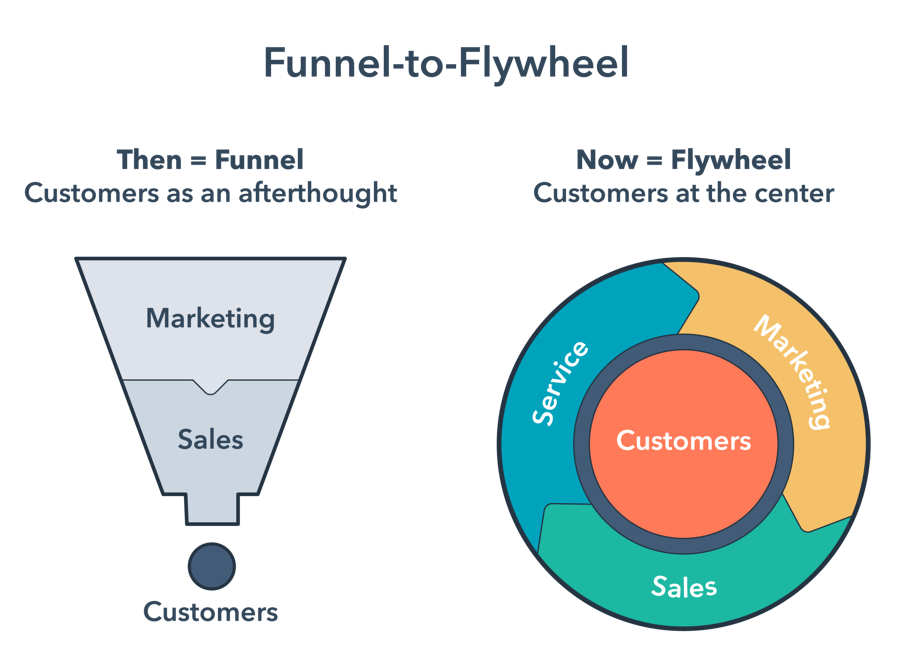Walk into the sales or marketing area of any modern day office and chances are you will hear people talking about a “funnel” or you will see a diagram of it somewhere. For many years, companies have structured their sales model around a funnel – and it worked.
However, with a funnel, the customer was always an after-thought, not a driving force. Sure it drove sales, but in today’s world, customer referrals and word-of-mouth have become the largest influence on the purchasing process, and that’s where the flywheel comes into play.
Unlike the funnel, the flywheel is about storing and releasing energy and is super important when thinking about your business strategy.
Invented by James Watt, the flywheel is extremely energy efficient. The amount of energy it stores, depends on how fast it spins, the amount of friction it encounters and its size. This type of energy is especially helpful when thinking about how customers can help build your business.
One way to think about it is: in the old model – the marketing funnel, customers were simply the outcome – nothing more, nothing less. All the energy spent acquiring the customer was wasted. With the flywheel, you drive momentum based on happy customers which drive referrals and repeat sales. Hypothetically, your business keeps spinning and growing at the same time.
Instead of a funnel where the customer is the end result, the flywheel puts the customer at the center: the axle. The flywheel is divided into three parts: marketing, sales and service, with the customers being in the center. Each effort feeds into the next, spinning round and round, circling the customer – the main focus.
The old model – the funnel, excels as a customer acquisition model, but doesn’t take into account how those customers can be fed back into the process to continue to drive more business, whereas the flywheel continues to create additional engagement and growth.
The momentum of the flywheel is determined by three primary parts:
1. The weight of the wheel
With a physical flywheel, the heavier the weight of the wheel means the greater the momentum and the harder it is to stop. The weight metaphorically speaks to exceptional customer service and how that builds up your customer reputation as a company. This builds retention, increasing the weight to keep the wheel spinning. All of this depends on how you deliver value through marketing, sales and service efforts, creating unique customer experiences.
2. How fast the wheel spins
How fast you spin it – i.e. the number of pushes it takes to spin the wheel depends on what type of content you are putting out there, the frequency in which you are pushing content out and through which channels you are seeking to reach these customers. Finally, as a result how many leads are coming from this content.
3. The friction of the wheel
Finally, reducing friction of the flywheel means making sure your customers are continually satisfied. This means ensuring all efforts from marketing to sales to service are aligned. If poor sales efforts are slowing down the momentum of marketing, the flywheel will slow down. Similarly, if poor service is hurting retention of hard-won sales, your business will suffer. But with all efforts tied together, the flywheel will spin in a continuous momentum.
This shift from funnel to flywheel caught my attention as we “Adacado” see advertising shifting from periodic campaigns to always-on marketing programs, which continues customer communication, retention and up-selling.
We employ a Flywheel model in our business, maybe you should too?


